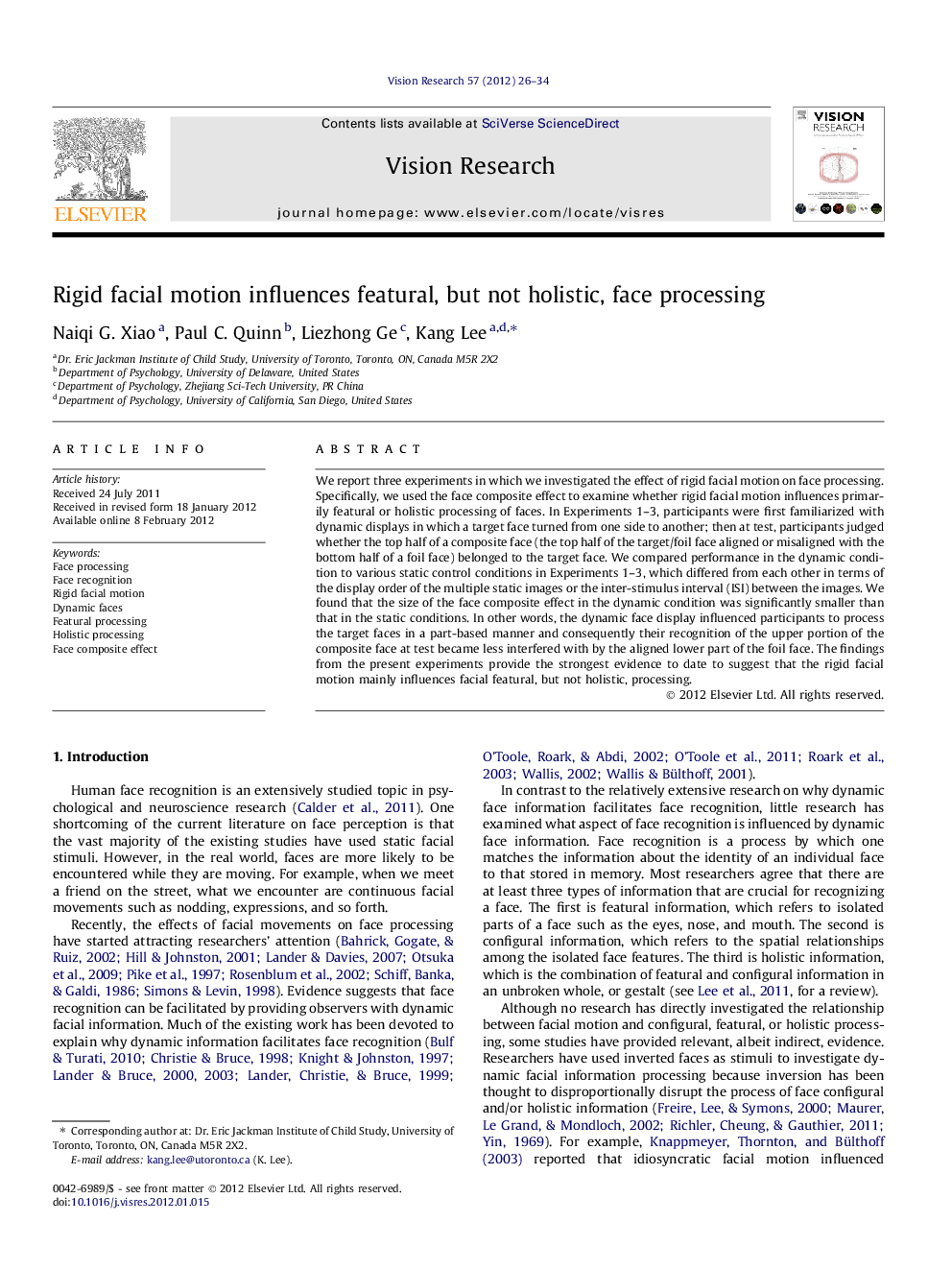| Article ID | Journal | Published Year | Pages | File Type |
|---|---|---|---|---|
| 4034035 | Vision Research | 2012 | 9 Pages |
We report three experiments in which we investigated the effect of rigid facial motion on face processing. Specifically, we used the face composite effect to examine whether rigid facial motion influences primarily featural or holistic processing of faces. In Experiments 1–3, participants were first familiarized with dynamic displays in which a target face turned from one side to another; then at test, participants judged whether the top half of a composite face (the top half of the target/foil face aligned or misaligned with the bottom half of a foil face) belonged to the target face. We compared performance in the dynamic condition to various static control conditions in Experiments 1–3, which differed from each other in terms of the display order of the multiple static images or the inter-stimulus interval (ISI) between the images. We found that the size of the face composite effect in the dynamic condition was significantly smaller than that in the static conditions. In other words, the dynamic face display influenced participants to process the target faces in a part-based manner and consequently their recognition of the upper portion of the composite face at test became less interfered with by the aligned lower part of the foil face. The findings from the present experiments provide the strongest evidence to date to suggest that the rigid facial motion mainly influences facial featural, but not holistic, processing.
► We examined the role of rigid facial motion on face processing. ► We compared the size of the face composite effect in dynamic and static conditions. ► Dynamic faces led to a smaller composite effect than that of static faces. ► Facial motion influenced featural but not holistic processing.
